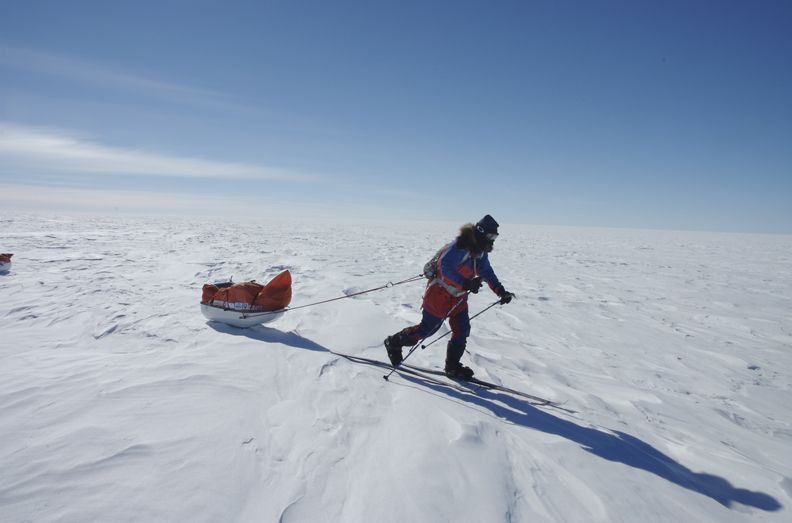By the time you read this, Howard Fairbank will be on the 30th day of his journey to the South Pole. Alone.
He hopes to reach the pole, on skis, pulling a sledge, by Christmas eve.
The Durban-born man who is trekking unassisted across the icy wastes of Antarctica, wrote on his blog that charts his adventure that he had never experienced anything like the total inability to judge distance.
Fairbank said every day was like a new milestone for him and felt quite special as he imagined himself “upside down”, walking to the globe’s southernmost point.
“To reward myself for achieving the milestone, I delved into my spare food stocks and found two pieces of Josee’s delicious lunch fruitcake: one for dessert tonight, and one for breakfast in the morning. It should have been an extra whisky celebration, but stock is ‘very tight’! Not from excessive helpings, but rather, being heavy, it was always going to be a scarce resource,” Fairbank said.
He also documents how his daily food ration is not enough and no crumb is spared.
His problematic right foot was also still affecting him, though it seemed to be getting better.
Fairbank has resorted to wearing five pairs of socks when he treks. “When one really pushes the pace or has a very heavy sled, the toes get quite stressed, and you almost need like a grab rail in your boot to help them claw back. This is the problem I have, where my toes and ball of my foot are now traumatised,” Fairbank said.
Two of his fingers have suffered from cold blisters and most of them are sensitive to the touch as a result of minor frost damage.
Fairbank said he did not miss shopping, going to gym, paying bills, doing laundry and kitchen dishes, supermarkets, traffic and garbage duty.
“I’m eating the same basic food each day, wearing the same clothes each day, not shaving nor brushing my hair, not showering, I have no idea what’s going on in the world, I haven’t seen or spoken to anyone yet, there is nothing I feel I need or want. Not even a hot bath! Why in that ‘other world’, do ‘we’ need so much variety, external stimulation, so much socialising, news, gadgets, material pleasures?” Source: Independent Online.
Related Story: Howard Fairbank's Solo trip to South Pole begins
He hopes to reach the pole, on skis, pulling a sledge, by Christmas eve.
 |
Photo: Antarctica Richard Weber
|
At sea, which is also a vast “nothingness”, he prided himself on his ability to judge long distances. but this was new territory and something had affected his gut feel.
“To reward myself for achieving the milestone, I delved into my spare food stocks and found two pieces of Josee’s delicious lunch fruitcake: one for dessert tonight, and one for breakfast in the morning. It should have been an extra whisky celebration, but stock is ‘very tight’! Not from excessive helpings, but rather, being heavy, it was always going to be a scarce resource,” Fairbank said.
He also documents how his daily food ration is not enough and no crumb is spared.
His problematic right foot was also still affecting him, though it seemed to be getting better.
Fairbank has resorted to wearing five pairs of socks when he treks. “When one really pushes the pace or has a very heavy sled, the toes get quite stressed, and you almost need like a grab rail in your boot to help them claw back. This is the problem I have, where my toes and ball of my foot are now traumatised,” Fairbank said.
Two of his fingers have suffered from cold blisters and most of them are sensitive to the touch as a result of minor frost damage.
Fairbank said he did not miss shopping, going to gym, paying bills, doing laundry and kitchen dishes, supermarkets, traffic and garbage duty.
“I’m eating the same basic food each day, wearing the same clothes each day, not shaving nor brushing my hair, not showering, I have no idea what’s going on in the world, I haven’t seen or spoken to anyone yet, there is nothing I feel I need or want. Not even a hot bath! Why in that ‘other world’, do ‘we’ need so much variety, external stimulation, so much socialising, news, gadgets, material pleasures?” Source: Independent Online.
Related Story: Howard Fairbank's Solo trip to South Pole begins




